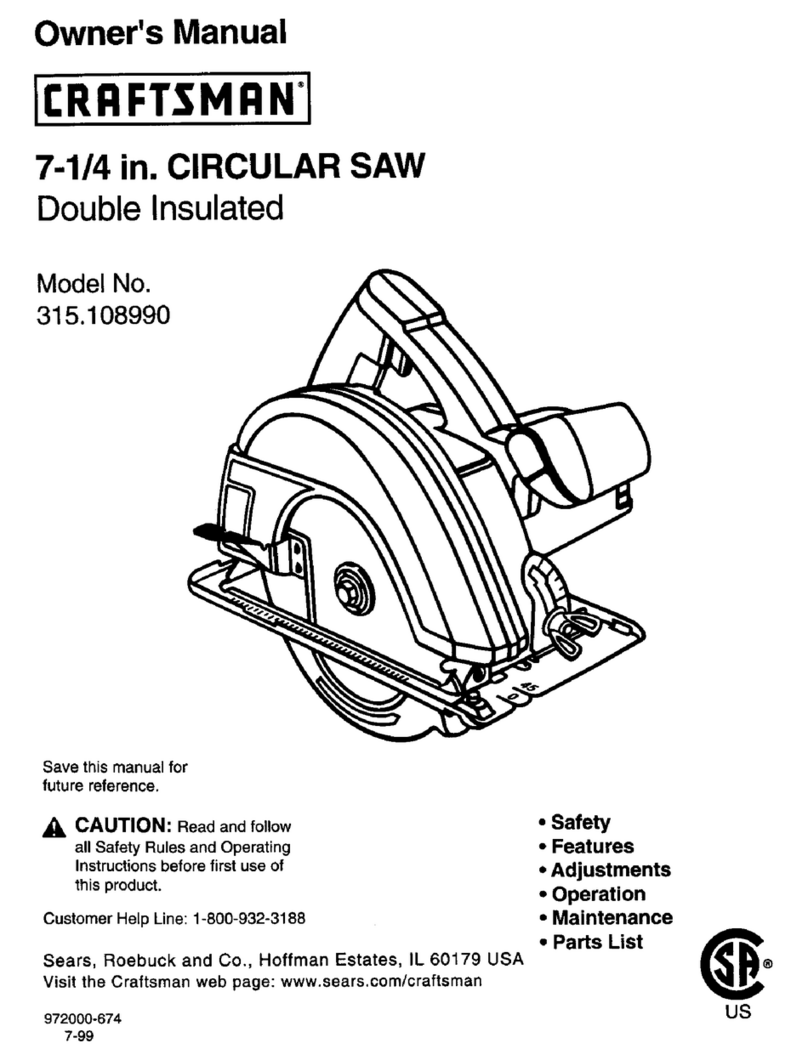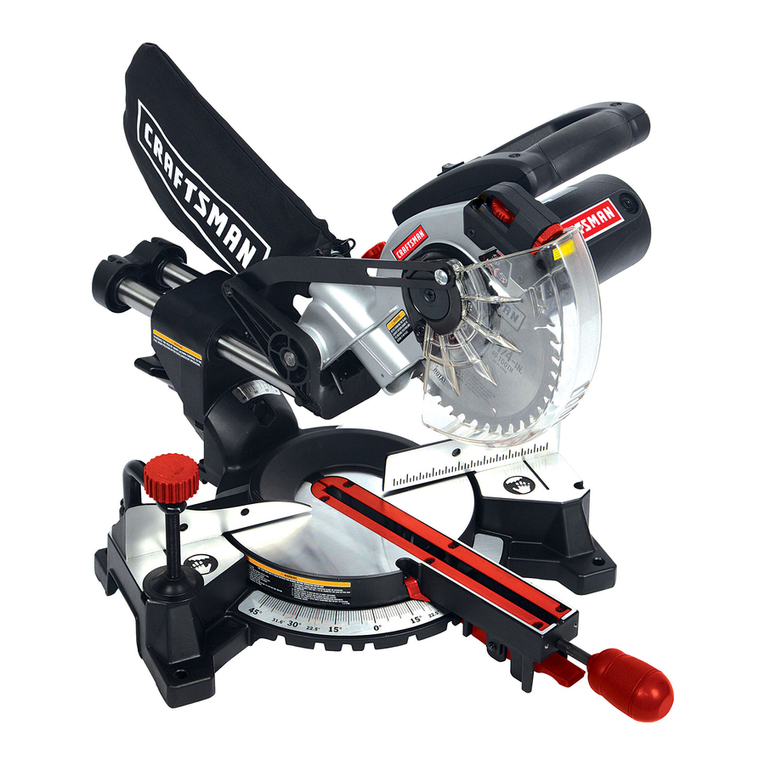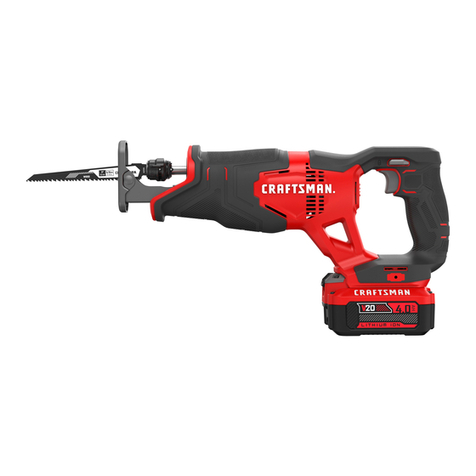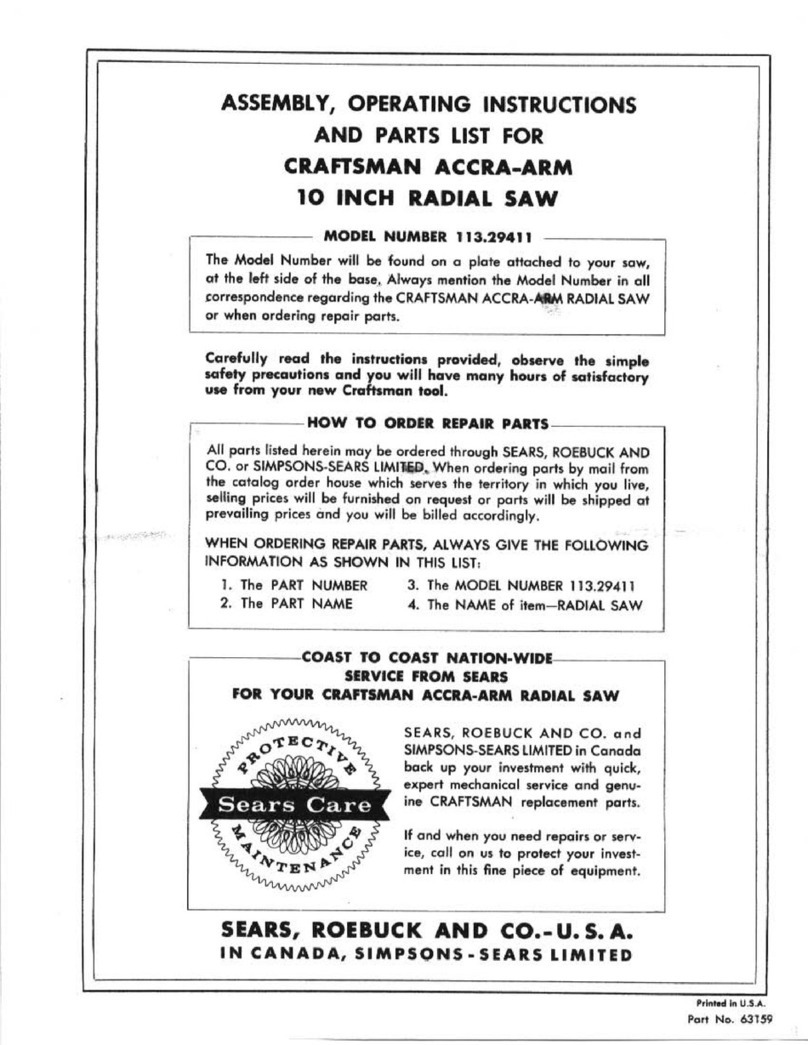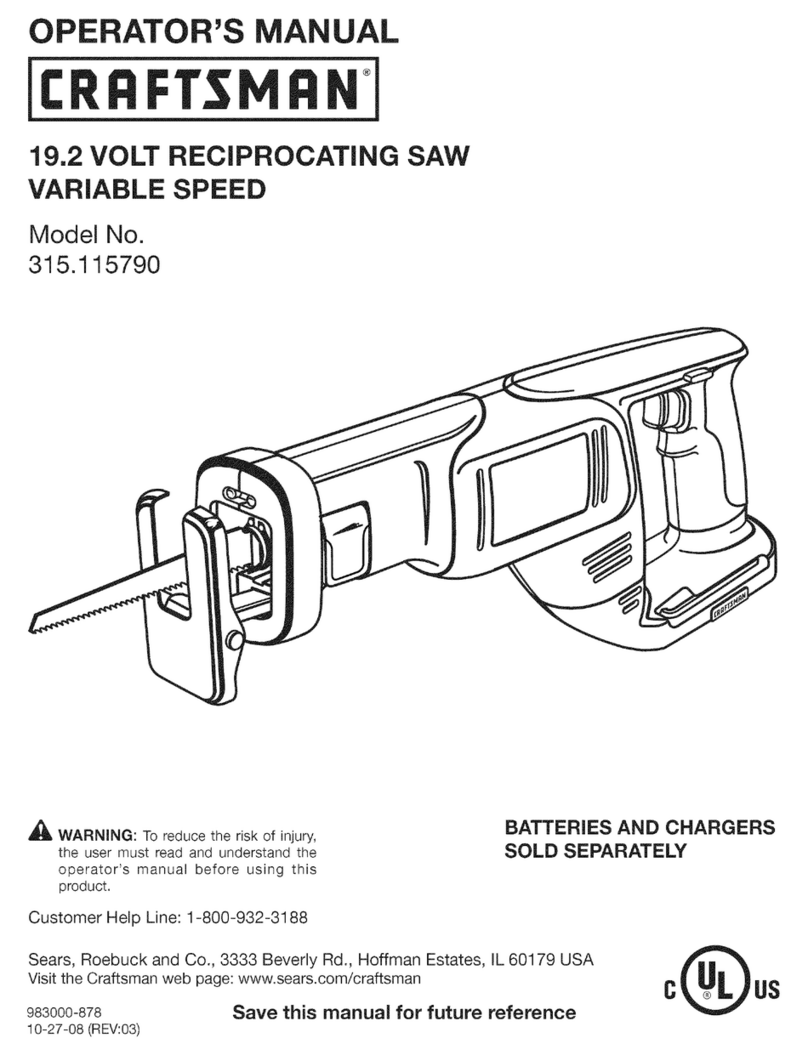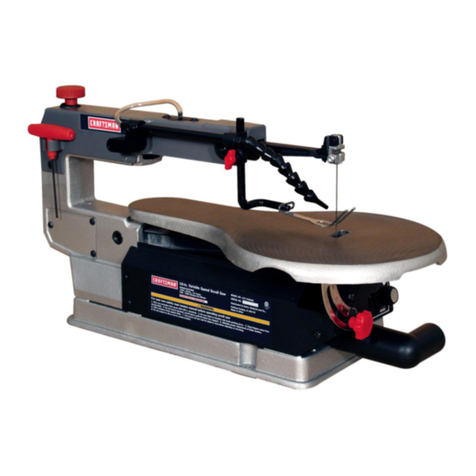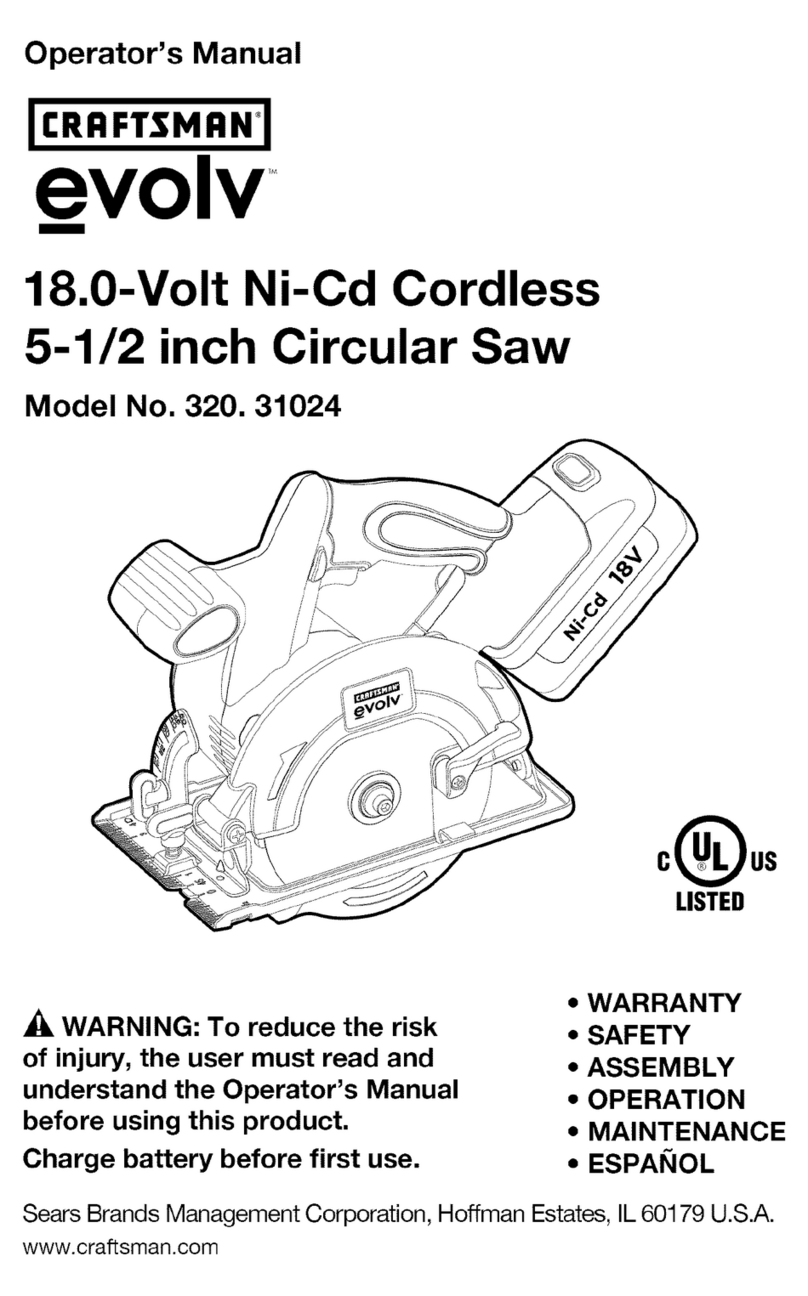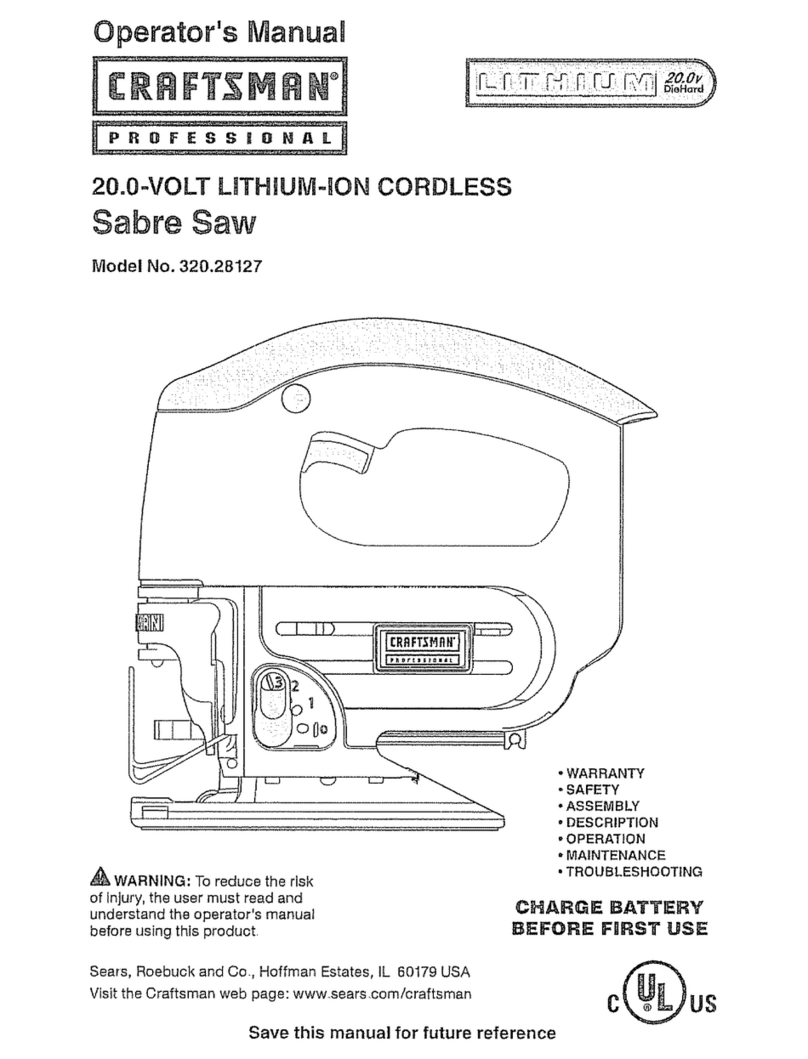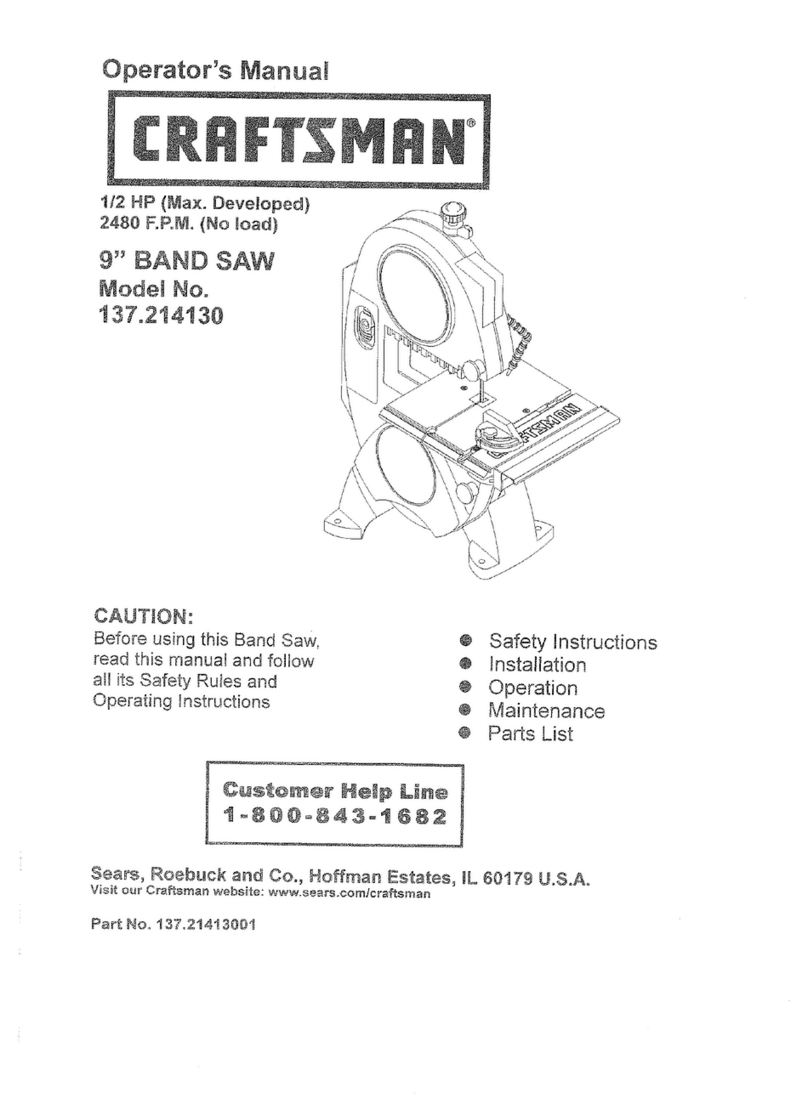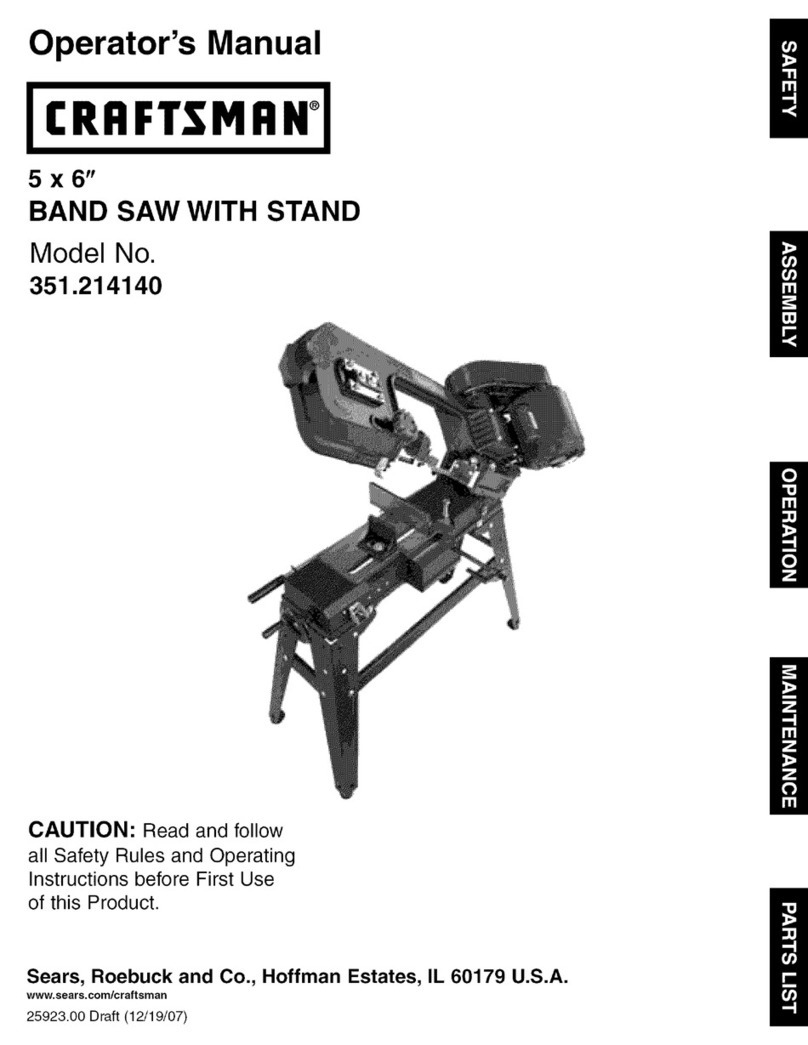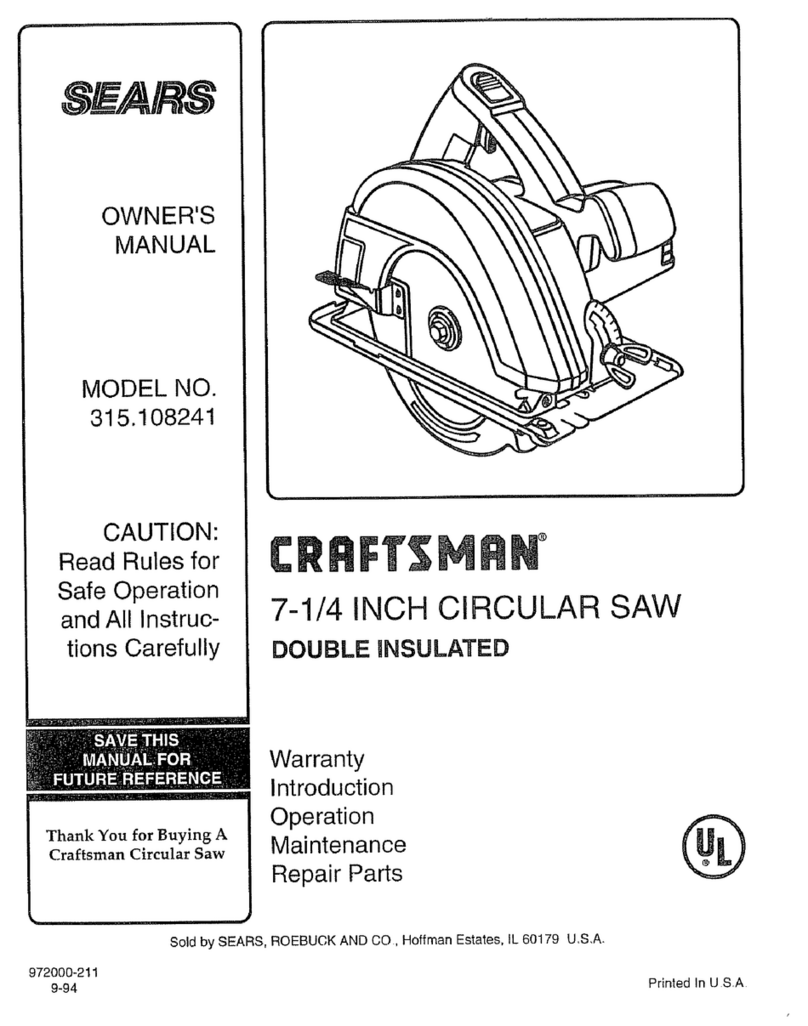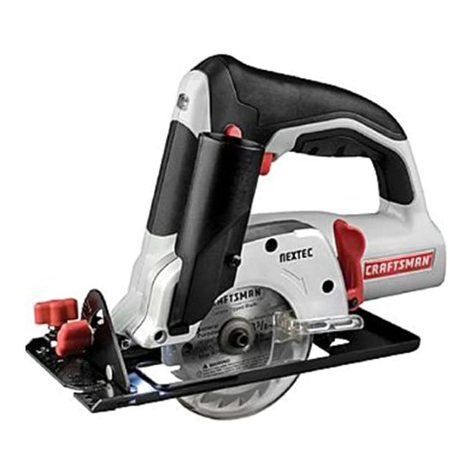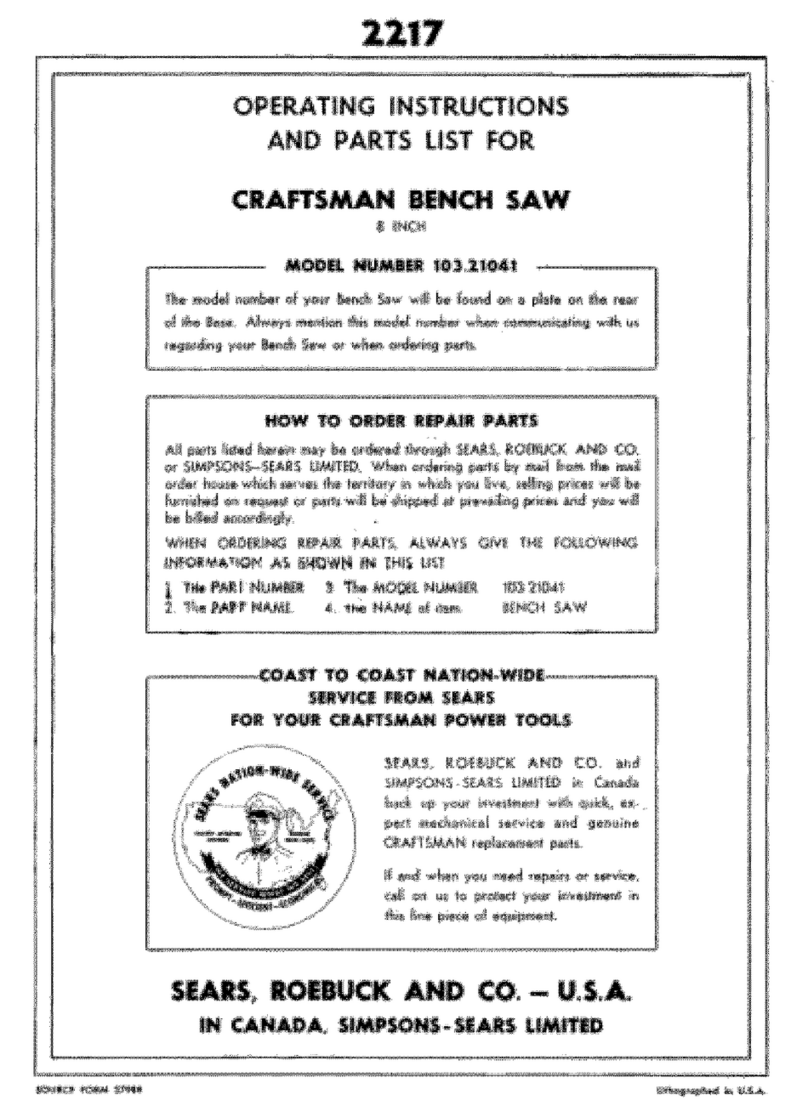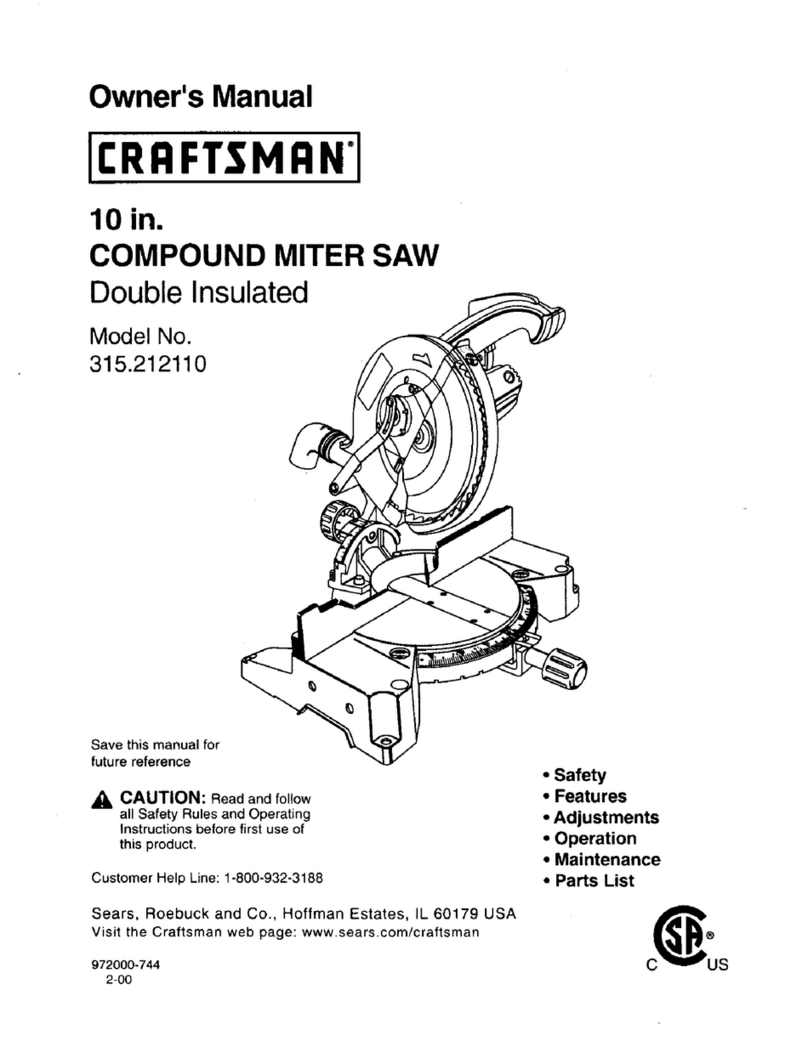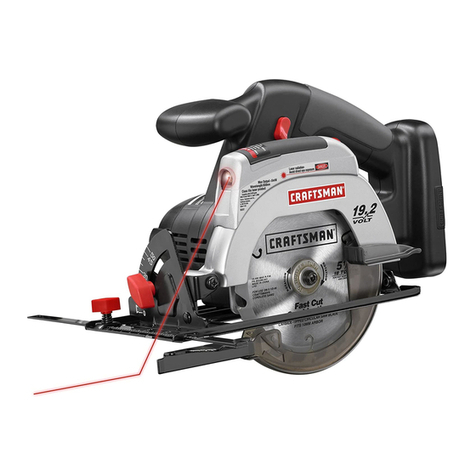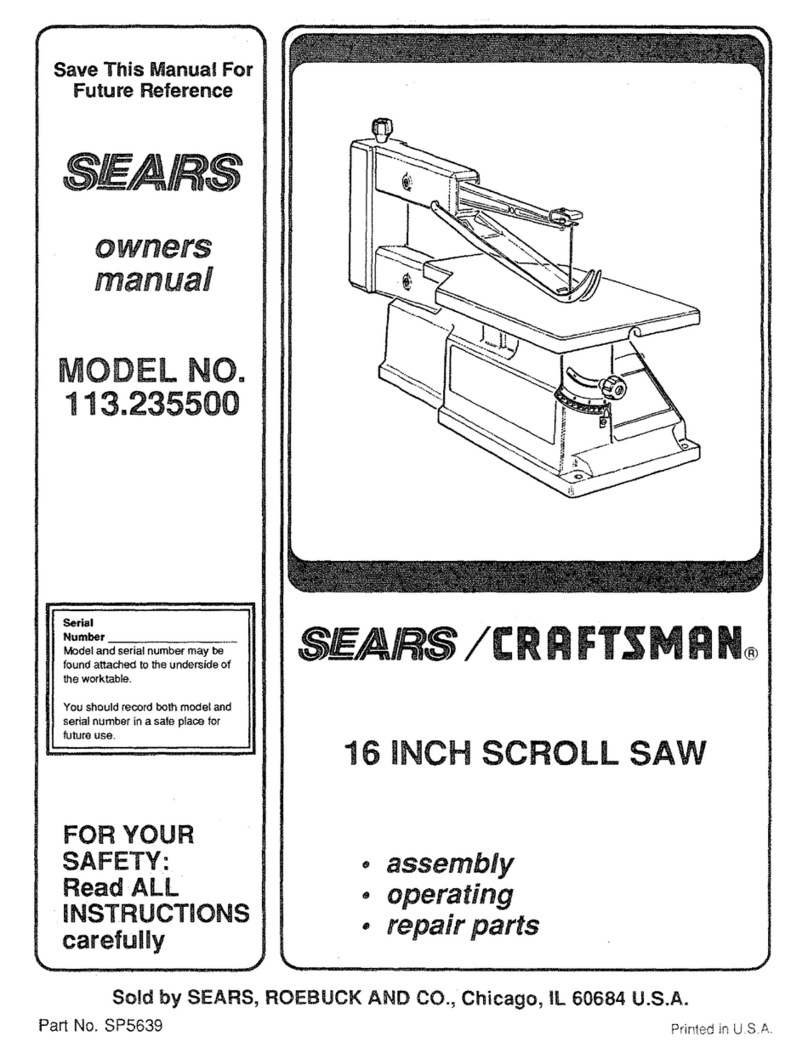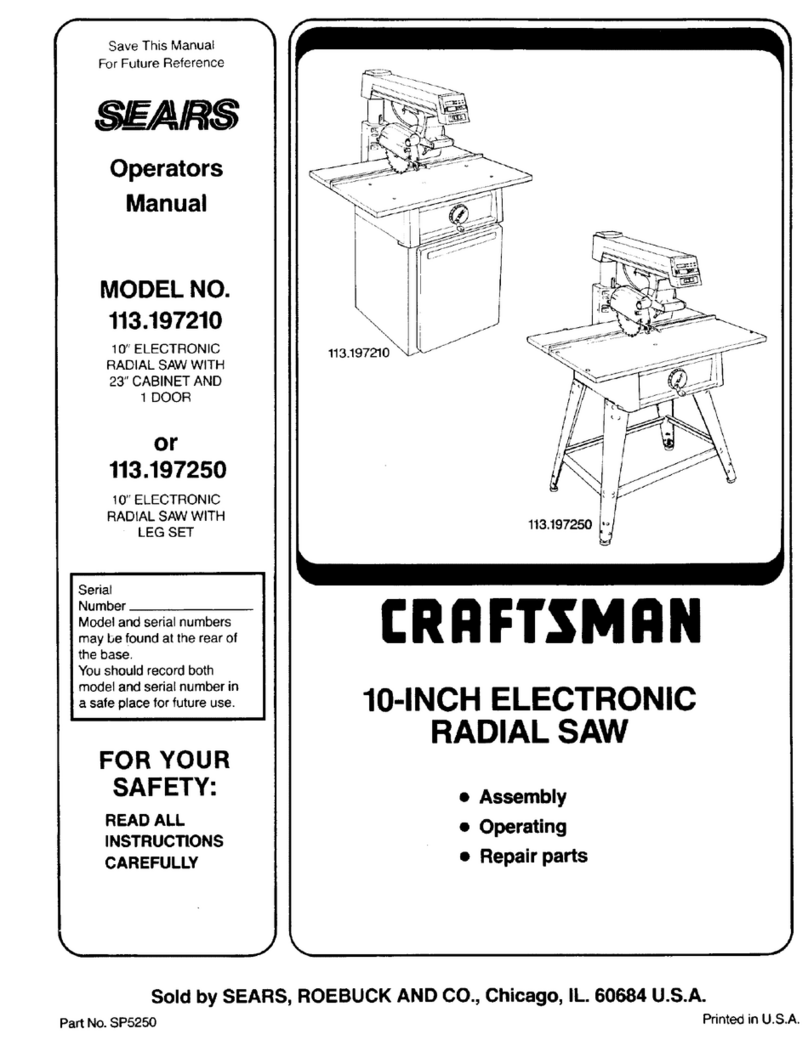SAFETY RULES FOR CIRCULAR SAWS cont.
_When sawing through a workplece, the lower blade guard
DOES NOT cover the blade on the underside ofthe workplece (Pg, 14 Fig,2).
ALWAYS keep your hands and fingers away from the cutting area.
3. CHECK lower guard for proper closing BEFORE each use. DO NOT operate
the saw if the lower guard does not move freely and close instantly, Never
clamp or tie the lower guard in the open position. Ifthe saw isaccidentally
dropped, the lower guard may be bent, Raise the lower guard withthe retracting
leveroThe guard is operating properly when It moves freely, does not touch the
blade or any other part in all angles and depths of cut, and readily returns to the
closed position.
4. CHECK the operation and condition of the lower guard spring. If the guard
and the spring are not operating properly, they MUST BE serviced before
use, The lower guard may operate sluggishly, due to damaged parts, gummy
deposits, or a buildup of debris° DO NOT operate your saw until the damage has
been repaired or replaced.
5. The lower guard should be retracted manually ONLY for making special
outs, such as pocket or compound cuts. ALWAYS raise the lower guard by
retracUng Its lever.As soon as the blade enters the material, the lower
guard MUST be released, For all othersawing, the lower guard should operate
automatically.
6.ALWAYS make sure that the lower guard is covering the blade BEFORE
placing the saw down on a work bench or floor, An unprotected movingblade
willcausethe saw to walkbackwards, cuttingwhatever isin itspath.Make note
ofthe time ittakes for the blade to stop spinning after the switch is released.
7. NEVER hold the piece being cut in your hands or across your legs. Itis
importantto support the workplecaproperlyinorder to minimize bodyexposure,
blade binding, or loss of control
8oHOLD TOOL by Insulated gripping surfaces (handles) when performing an
operation where the cutting tool may contact hidden wiring or Its own cord,
Contact witha "live" wire wiltmake the exposed metal parts ofthe tool "live" and
shock the operator.
9oALWAYS clamp the workplece securely so it wilt not move when making the cut.
10. When ripping, ALWAYS USE a rip fence or straight edge guide, This improves
the accuracy of the cut and reduces the chance of the blade binding.
11. ALWAYS USE blades that have the correct size and shape (diamond vs,
round) arbor holes, Blades that donot match the mounting hardware ofthe saw
willrun erratically and cause loss of control°
12. NEVER use damaged or Incorrect blade washers or bolts. The blade washers
and bolts were specially designed for your saw, for optimum performance and
safety of operation.
13. NEVER cut more than one piece at a time. DO NOT STACK more than one
workptece on the worktable at atime.
14oAVOID awkward operations and hand positions where asudden slip could
cause your hand to move Into the blade.
15. NEVER reach Into the cutUng path of the blade.
